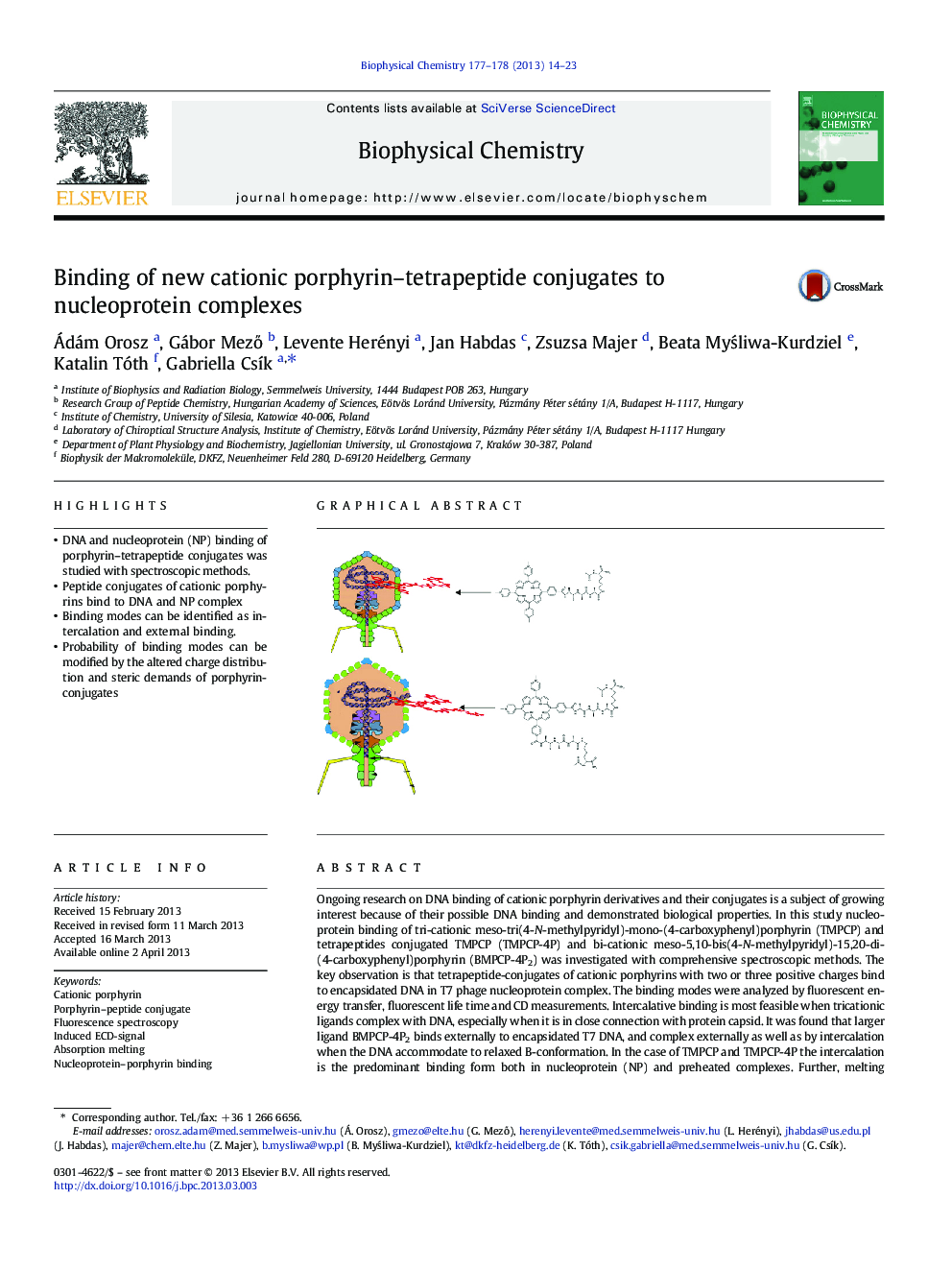| کد مقاله | کد نشریه | سال انتشار | مقاله انگلیسی | نسخه تمام متن |
|---|---|---|---|---|
| 5371140 | 1503935 | 2013 | 10 صفحه PDF | دانلود رایگان |

- DNA and nucleoprotein (NP) binding of porphyrin-tetrapeptide conjugates was studied with spectroscopic methods.
- Peptide conjugates of cationic porphyrins bind to DNA and NP complex
- Binding modes can be identified as intercalation and external binding.
- Probability of binding modes can be modified by the altered charge distribution and steric demands of porphyrin-conjugates
Ongoing research on DNA binding of cationic porphyrin derivatives and their conjugates is a subject of growing interest because of their possible DNA binding and demonstrated biological properties. In this study nucleoprotein binding of tri-cationic meso-tri(4-N-methylpyridyl)-mono-(4-carboxyphenyl)porphyrin (TMPCP) and tetrapeptides conjugated TMPCP (TMPCP-4P) and bi-cationic meso-5,10-bis(4-N-methylpyridyl)-15,20-di-(4-carboxyphenyl)porphyrin (BMPCP-4P2) was investigated with comprehensive spectroscopic methods. The key observation is that tetrapeptide-conjugates of cationic porphyrins with two or three positive charges bind to encapsidated DNA in T7 phage nucleoprotein complex. The binding modes were analyzed by fluorescent energy transfer, fluorescent life time and CD measurements. Intercalative binding is most feasible when tricationic ligands complex with DNA, especially when it is in close connection with protein capsid. It was found that larger ligand BMPCP-4P2 binds externally to encapsidated T7 DNA, and complex externally as well as by intercalation when the DNA accommodate to relaxed B-conformation. In the case of TMPCP and TMPCP-4P the intercalation is the predominant binding form both in nucleoprotein (NP) and preheated complexes. Further, melting experiments revealed that bound porphyrins do not influence the capsid stability or protein-DNA interactions, but efficiently stabilize the double helical structure of DNA without respect to binding form. A good correlation was found between porphyrin/base pair ration and DNA strand separation temperature.
Journal: Biophysical Chemistry - Volumes 177â178, JulyâAugust 2013, Pages 14-23